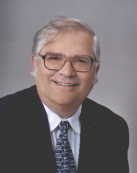Year: 2008 Pages: 8
The ambiguities of this low-noise composite measurement are not required since it is simply used to smooth the noise in the wide-lane refraction-corrected composite. By not requiring the stepping from one ambiguity-resolved carrier phase measurement to another, it is largely immune to clock differences at the different frequencies which can sabotage the stepped approach. In addition, because the initial ambiguity resolution is done with wide-lane combinations, the reliability of the ambiguity resolution is robust and relatively insensitive to the presence of small code-carrier biases.
The geometry-free approach of individually resolving the ambiguities removes the tropospheric refraction from the ambiguity resolution problem. Thus, the final smoothed, refraction-corrected composite measurement is insensitive to both ionospheric and tropospheric refraction effects. Though the smoothing process may require some minutes to reach the optimal accuracy level, the result should significantly extend the ranges over which RTK results can be obtained without requiring the modeling of the ionosphere.


